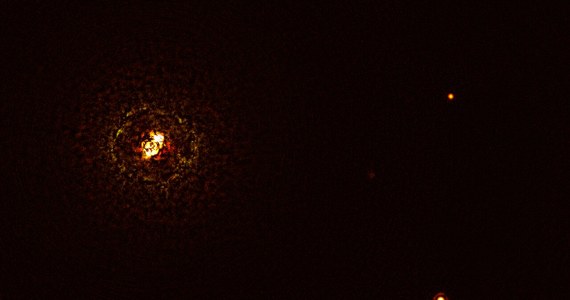Astronomers using the European Southern Observatory (ESO) have discovered and photographed a planet orbiting a binary star system of exceptional mass and high temperature. Until now, the existence of planets in such a neighborhood seemed impossible. However, with the help of the VLT (Very Large Telescope) system at Cerro Paranal in Chile, it was possible to detect one of them. A planet 10 times larger than Jupiter orbits the naked eye b Centauri star system, 325 light-years away.
“Discovery Planet orbiting Centauri It completely changes our view of massive stars as hosts of planetary systems” – confirms Marcus Jansson, first author of the paper published in Nature, astronomer at Stockholm University Marcus Jansson, visible to the naked eye in the constellation Centauri. An enormous system of stars around which any planet can be found Its existence seemed impossible under these conditions, and the previous system, which held the record in this respect, was only three times larger than the Sun. It is ten times larger than Jupiter and orbits with a radius of 100 times the average distance between Jupiter and the Sun.
The most massive stars are also the hottest. HIP 71865 is no exception. the basic A type B star is three times hotter than the Sun. This type of star emits huge amounts of ultraviolet and X-rays. Its impact on the environment must impede the formation of the planet. Janson acknowledges that “the ocean of B-type stars is too dangerous for large planets to form there.” The new discovery shows that it is possible.
“Planet B Centauri is located in a very different environment than we experience in the solar system,” adds co-author Gayathri Viswanath, a doctoral student at Stockholm University. “In this hostile environment, in the face of strong radiation, everything is gigantic, the stars are larger, the planets are larger, and the distances are greater.” maybe just The fact that the planet orbits in such a large orbit gave it a chance to survive.
The discovery was made possible by the High Contrast Exoplanet Searcher (SPHERE) instrument installed on the ESO VLT telescope in Chile. Sphere has previously succeeded in photographing several planets orbiting stars other than the Sun, including the first-ever image of two planets around a sun-like star. However, SPHERE was not the first instrument to image this planet. The study authors looked at archival data on the b Centauri system and found that it was imaged more than 20 years ago by ESO’s 3.6-meter telescope, but that it was not recognized as a planet at that time.

“Devoted organizer. Incurable thinker. Explorer. Tv junkie. Travel buff. Troublemaker.”







